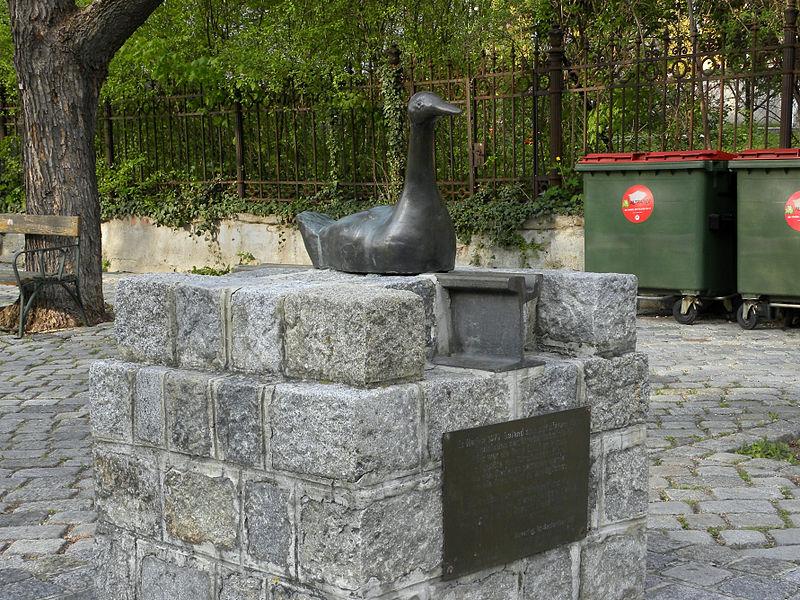How Vienna’s residents took a stubborn bird to heart
There should be more statues of animals in the world.
Edinburgh has Greyfriars Bobby, an unassuming statue of a Skye Terrier that guarded his master’s grave for 14 years. His nose is kept burnished by tourists who touch it for luck.
Tokyo has the Hachiko, a statue of another good boy that watches the crowds pour in and out of Shibuya station. After his owner died at work, Hachiko came to the station every day for nine years in the hope of walking the last part of the commute with his master.
This is the story of Vienna’s own animal statue, the likeness of a goose called Lilli who’s remembered not for the unfailing resilience of her devotion to her master, but for her love of sitting down.
Lilli the goose was a resident of Sievering, part of Vienna’s 19th district. Sievering is an old suburb with a countryside feel. Over half the land is given over to vineyards, much of the rest is forest and fields. The pace of life there is even slower than in the rest of the city.
Like all the best quiet corners of Vienna, though, Sievering had a tram to take its residents directly to the centre of town (and the rest of the city to the ‘Heuriger’ houses to drink wine from the small, family-run vineyards). The 39 line carried the city’s old red trams all the way from Sievering to the famous Ringstrasse that encloses the first district.
The tram routes in this corner of the city are beautiful, but the drivers on the 39 line had an obstacle to contend with.
On the track at Sievering, invariably, sat Lilli. For 35 years, her favourite spot was the turning circle at the end of the line. So comfy was she that the exasperated drivers had to move her off the track. Not chase her, not trill disapprovingly on the bell, not clap until she hissed and flapped away, but pick her up and carry her to the side.
Lilli was so dedicated to sitting that she waited for each tram to roll back down into town before she waddled back to sit until the next tram came and she had to be carried off again.
The 39 line was discontinued in August 1970. Lilli lived out the rest of her days without being rudely removed from her favourite spot. But the people of Sievering had taken her so much to heart that, 17 years after the last tram rumbled through, they erected a statue in her honour.
Greyfriar’s bobby and Hachiko remind us to be loyal and to keep faith even in heartbreak and hopelessness but Lilli had no master. Her noble goal was simply to sit down in peace.
The plaque on Lilli’s statue speaks of her commitment to taking life slowly. She had become, it says, a symbol of the tranquillity of village life and the ‘Gemütlichkeit’ (the comfort, cosiness, and easy, friendly atmosphere) on which Sievering prided itself.
The plaque doesn’t say it, but I imagine that Lilli also earned her place in the district’s heart through her stubbornness. She exemplified a spirit that many would also recognise in the human inhabitants of Vienna.
So war es, so ist es, und so wird es immer sein. Even if you are a goose.

This article was originally published on Medium. If you enjoy it, could you pop over to the site and give it a clap? It helps other people find my work and keeps the Vienna English Copy lights on. Happy reading!
